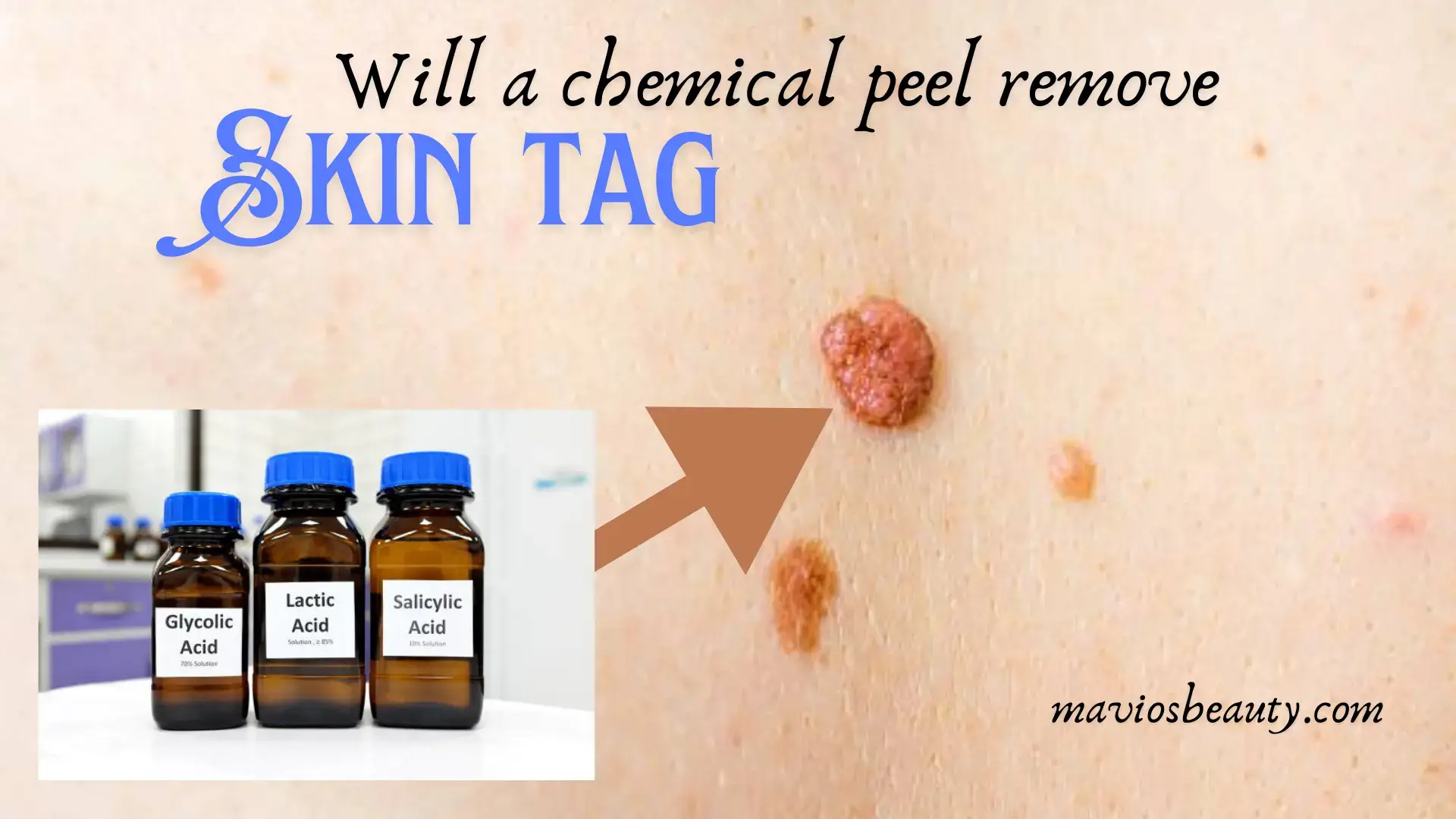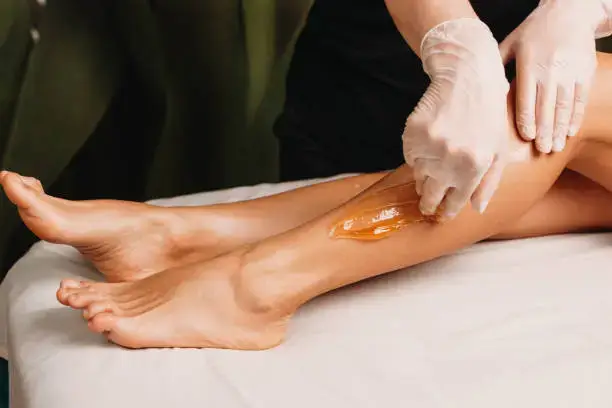Will a Chemical Peel Remove Skin Tags? Decoding Its Efficacy and Separating Fact from Fiction
Will a chemical peel remove skin tags? When it comes to skin, you are very detailed, but these pesky skin tags seem to grow from nowhere overnight, and this got you on a quest for the perfect solution. Chemical peel, on the other hand, is praised for its wonders on skin treatments, making this question pondering on your mind: Will a chemical peel be the answer to your skin tag woes?
In the broad niche of skincare techniques, chemical peels are popular for achieving a smooth, radiant complexion. Yet, when tackling skin tags, the water seems murkier.
In this article, we will explore the potential of chemical peels in removing skin tags, examining the science behind them, and exploring alternative methods. We seek to equip you with the knowledge to make informed decisions about your skincare routine. Journey with us for utmost clarity on answering the question: will chemical peel remove skin tags?
Understanding Chemical peel
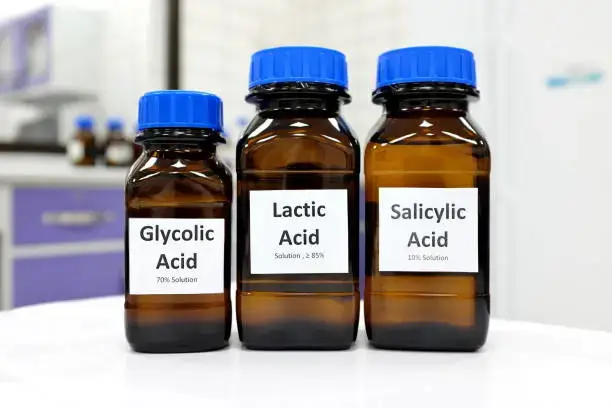
Before embarking on this article, it is essential to understand the contexts involved. Chemical peel, being of great curiosity, is our first focus. So, what do you understand by the term chemical peel? Chemical peels are skincare treatments designed to rejuvenate the skin by removing the outer layers of the skin. These outer layers contain dead skin cells that make the skin appear dull and rough.
Chemical peels utilize a blend of chemical solutions such as alpha hydroxy acids (AHAs), beta hydroxy acids (BHAs), and Trichloroacetic acids (TCAs) to exfoliate the skin properly. They are applied to the skin, typically the face, neck, or hands, to improve its texture and appearance.
Chemical peels come in different strengths and types, including Mild, medium, and deep peels. You can learn more about the best chemical peel for hyperpigmentation on black skin here. Mild peels use gentle acids such as glycolic acid or lactic acid to exfoliate the outermost layers of the skin. Medium peels penetrate deeper into the skin, targeting moderate skin issues like fine lines, mild pigmentation, and sun damage. On the other hand, deep peels are reserved for more severe cases of sun damage, wrinkles, and collagen stimulation.
Common uses and benefits of chemical peels:
Chemical peels offer a range of benefits for the skin, including:
- Improving skin texture and tone
- Minimizing the appearance of fine lines and wrinkles
- Reducing hyperpigmentation, age spots, and sun damage
- Smoothing acne, scars and blemishes
- Unclogging pores and preventing acne breakouts
- Enhancing the absorption and effectiveness of skincare products
These versatile treatments can be customized to address specific skincare concerns, making them popular for individuals seeking healthier, more radiant skin.
Understanding Skin Tags
Skin tag is the second context of focus in this article. Medically, skin tags are known as acrochordons, which are benign growths of relatively small skin with a soft protrusion on the skin’s surface. These growths are non-cancerous and don’t pose any danger to the skin.
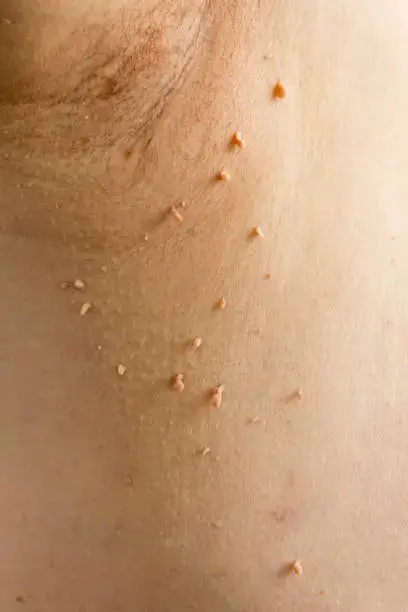
They develop in the areas of the skin where clusters of collagen and blood vessels are trapped. These areas are where the skin rubs vigorously on each other, such as the neck, armpits, groin, eyelids, and under the breasts.
Skin tags can be very uncomfortable to some individuals on a quest for a more radiant skin complexion.
Causes of skin tags:
While the exact cause of skin tags is not fully understood, several factors may contribute to their growth:
- Heredity: This is one of the common factors contributing to skin tag formation. If your parents or any family member has skin tags, genetic predisposition is likely.
- Friction or rubbing: Skin tags often grow in areas where friction exists, either rubbing with clothing or skin against the skin—the areas such as the neck, underarms, and groin.
- Hormonal changes: Fluctuations in hormone levels, such as during pregnancy or puberty, may increase the likelihood of developing skin tags.
- Obesity: Being overweight or obese can create additional folds and creases in the skin, providing ideal conditions for skin tags to form.
- Age: Skin tags become more familiar with age, with middle-aged and older individuals more susceptible to their development.
- Diabetes: Diabetic patients are more susceptible to skin tags, according to scientists.
Read also: Can Skin Tags be Removed by Laser
Common misconceptions about skin tags:
Despite skin tags being harmless, people often have several misconceptions, which brought us to quickly clear the air before moving to the main business of this article.
- They are contagious: Skin tags are not contagious and cannot be spread through skin-to-skin contact.
- They indicate poor hygiene: Skin tags are unrelated to personal hygiene and can occur in individuals with impeccable cleanliness.
- They are a sign of cancer: Skin tags are benign growths not associated with cancer. However, it’s essential to consult a healthcare professional if you notice any changes in the appearance of skin tags or if they bleed, itch, or become painful.
Understanding these aspects of skin tags can help individuals recognize and manage these common skin growths effectively.
Will a Chemical Peel Remove Skin Tags
Chemical peel works by exfoliating the outer layers of the skin, shedding dead skin cells and causing it to peel off gradually. It addresses skin concerns like fine lines, wrinkles, and hyperpigmentation; their efficacy for removing skin tags is less straightforward.
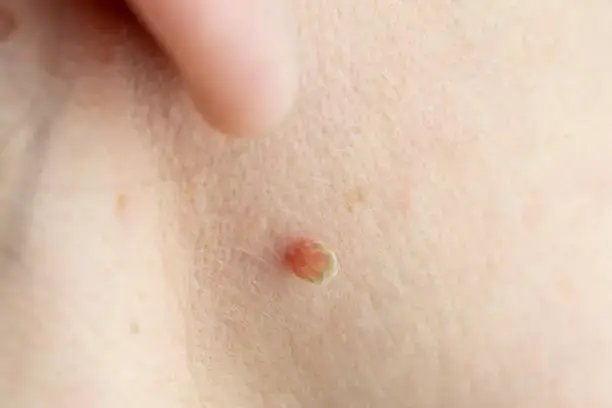
Skin tags, on the other hand, contain fibrous tissues and blood vessels that are not easily affected by chemical peels. As a result, chemical peels will find it challenging to remove skin tags successfully. Research has been performed on the efficacy of chemical peel on skin tag removal, and mixed results have been yielded.
Some studies suggest that certain types of chemical peels, particularly those containing high concentrations of trichloroacetic acid (TCA), may effectively reduce the size or appearance of skin tags. However, the results are often inconsistent, and additional research is needed to establish the safety and efficacy of chemical peels for this purpose.
While anecdotal evidence and testimonials from individuals who have undergone chemical peels for skin tag removal may provide insights into their experiences, it’s essential to approach such accounts cautiously.
Real-life experiences vary widely, and what works for one person may not necessarily work for another. It’s advisable to consult with a qualified dermatologist or specialist to determine the most appropriate treatment option for individual needs.
Potential risks and side effects of using chemical peels for skin tag removal
Using chemical peels as a remedy for removing skin tags can pose a potential risk or side effect, just like any other skincare procedure. Most often, when trying to get rid of skin tags, chemical peels can be overly used, or more aggressive ones are introduced for quicker actions. This can adversely affect the skin, leading to issues like;
- Skin irritation or redness
- Burning or stinging sensation
- Temporary darkening or lightening of the skin
- Increased sensitivity to sunlight
- Scarring or skin damage, particularly with deep or aggressive peels
- Infection or allergic reactions
It’s paramount to discuss the risks and benefits of chemical peels with a qualified healthcare provider before undergoing treatment, especially when considering their use for skin tag removal. Alternative methods like cryotherapy or excision may offer more predictable results with fewer potential risks.
In conclusion:
The question of whether a chemical peel can effectively remove skin tags remains a topic of debate within the skincare community. While chemical peels are renowned for improving skin texture and addressing various concerns, their efficacy in eliminating skin tags still needs to be determined.
Some research suggests potential benefits, such as a reduction in size or appearance, but the results are inconsistent, and further studies are warranted. If you’re seeking treatment for skin tags, an informed decision and consultation with your specialist is advised.
In navigating the vast landscape of skincare treatments, knowledge, and prudence are invaluable assets. It is good to ask questions and get specialist advice; this will empower you more in handling skin concerns. You can also drop your confusion and questions below in the comment section for guidance.
Glow right!
FAQs
What types of chemical peels are commonly used for skin tag removal?
Chemical peels with high concentrations of trichloroacetic acids (TCAs) are often recommended, although they are not guaranteed to remove skin tags. However, the success of the treatment depends on the size, location, and characteristics of the skin tag.
Are chemical peels safe for removing skin tags?
In most common cases, skin treatment products are accompanied by side effects. Chemical peels are not entirely safe as they carry certain risks and potential side effects, such as skin irritation, burning, scarring, temporary changes in skin color, etc.
Are there alternative treatments for removing skin tags besides chemical peels?
Yes, even more effective alternatives for skin tag removal include cryotherapy (freezing), excision (surgical removal), laser removal, and over-the-counter topical treatments. Each method has its advantages and considerations.
Can I remove skin tags at home using chemical peels?
While some over-the-counter chemical peel products are available for home use, it’s essential to exercise caution. Chemical peels can cause skin irritation and other adverse reactions, especially when not administered by a qualified professional. It’s recommended to seek professional guidance for safe and effective treatment.

